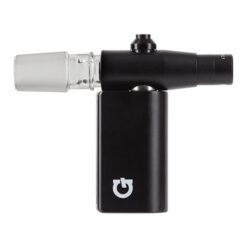Cannabis Sativa is a flowering plant known for its robust growth pace and unique properties. It belongs to the Cannabaceae family and is cultivated primarily for its medicinal, recreational, and industrial uses.
Whether you’re a seasoned cannabis enthusiast or a newcomer curious about the Sativa strain, this ultimate guide will equip you with the knowledge needed to navigate the intriguing realm of Cannabis Sativa.
Cannabis Sativa’s Botanical Characteristics
Cannabis Sativa leaves are characterized by their elongated shape with serrated edges. These leaves typically consist of 5 to 7 narrow leaflets, and they can grow quite large, often measuring several centimetres in length. The distinctive leaf structure aids in differentiating it from other plant species.
One of the standout features of Cannabis Sativa plants is their remarkable height. They can reach towering heights of up to 3.5 metres or more, making them suitable for outdoor cultivation in regions with ample space. Sativa strains tend to exhibit a slender and elongated growth pattern, with branches that spread out widely.
How Does Cannabis Sativa Differ From Other Cannabis Species?
Cannabis Sativa exhibits several notable distinctions when compared to other Cannabis species, such as Cannabis Indica and hybrid strains.
- Sativa plants typically have a longer flowering period, often ranging from 10 to 16 weeks, whereas Indica strains tend to have a shorter flowering phase.
- Sativa strains thrive in regions with longer daylight hours, like equatorial areas, while Indica strains are better suited to shorter growing seasons and colder climates.
In recent years, cannabis breeding has led to the development of hybrid strains that combine characteristics of both Sativa and Indica. Hybrid strains offer a wide range of effects, as their properties can be tailored to suit specific preferences.
Cannabinoids: The Chemical Key
Cannabis Sativa contains a diverse array of chemical compounds, but cannabinoids are of particular interest due to their interaction with the endocannabinoid system.
THC (Tetrahydrocannabinol) And Its Effects
THC is the primary psychoactive compound in cannabis and is responsible for the euphoria, altered perception, and increased appetite often associated with its use. It binds to cannabinoid receptors in the brain, affecting mood, coordination, and cognitive function.
CBD (Cannabidiol) And Its Potential Benefits
CBD is non-psychoactive and is being extensively studied for its potential therapeutic benefits.
It has shown promise in alleviating pain, reducing anxiety, and even managing certain seizure disorders.
-
Reakiro – Broad Spectrum CBD Oil Mouth Spray – Peppermint
R499.00 – R799.00 -
Zootly CBD Jellies Jar – Sour Apple (60mg)
R120.00 -
Zootly CBD Bon Bons (50mg)
R60.00 -
Green Angel CBD Vegan Chocolate
R85.00
Terpenes: The Aroma Architects
Terpenes are aromatic compounds found in Cannabis Sativa, contributing to its distinct aroma and potential effects.
Terpene profiles vary among different strains, shaping their scent and effects.
Some terpenes, like myrcene, may promote relaxation, while others, like caryophyllene, may have anti-inflammatory properties.
Sativa strains often contain terpenes like limonene, which imparts a citrusy scent, and pinene, which gives off a pine-like aroma. Each terpene has unique properties that can influence the overall sensory experience of a strain.
The Historical And Cultural Significance Of Sativa Strains
Ancient civilizations in Asia and the Middle East used cannabis for its medicinal properties, treating ailments ranging from pain to insomnia. Hemp, a non-psychoactive variety of Cannabis Sativa, has been cultivated for thousands of years for textiles, paper, and food production.
In recent decades, Cannabis Sativa has played a prominent role in counterculture movements and has experienced shifting legal perspectives worldwide.
- The 1960s and 1970s saw the rise of cannabis as a symbol of rebellion and alternative lifestyles.
- Legalization and decriminalization efforts have gained momentum in various countries, reshaping attitudes towards cannabis.
Cannabis Sativa’s Potential Health Benefits
Cannabis Sativa offers a wide range of potential health benefits, thanks to its complex chemical composition. While research is ongoing, several key areas stand out:
Pain Management And Relief
Cannabis has been used for centuries as an analgesic, offering relief from various types of pain, including chronic pain, neuropathic pain, and inflammatory pain. Cannabinoids like THC and CBD may interact with pain receptors, modulating the perception of discomfort.
Managing Anxiety And Depression
CBD, in particular, has garnered attention for its potential to alleviate symptoms of anxiety and depression. It is believed to influence serotonin receptors in the brain, promoting a sense of calm and well-being.
Exploring Current Medical Research And Studies
The medical community is actively researching the therapeutic applications of Cannabis Sativa, revealing promising findings and ongoing investigations.
Studies have shown that cannabinoids may be effective in managing symptoms associated with conditions such as epilepsy, multiple sclerosis, and chemotherapy-induced nausea.
CBD-based pharmaceuticals have gained approval in some regions for treating specific disorders.
Ongoing research is exploring the potential of cannabis in treating a wide range of medical conditions, from Alzheimer’s disease to post-traumatic stress disorder (PTSD). Continued research into the precise mechanisms of cannabinoids and terpenes holds promise for new medical breakthroughs.
Navigating Global Legalities
The legal status of Cannabis Sativa varies significantly around the world, creating a complex and evolving landscape.
Some countries, like Canada and Uruguay, have fully legalized cannabis for both medical and recreational use. Others maintain strict prohibition, imposing severe penalties for possession and distribution.
Legalization movements are gaining momentum in various parts of the world, driven by changing public attitudes and recognition of potential economic benefits. Debates surrounding legalization often revolve around regulatory frameworks, taxation, and social impacts.
Regulatory Challenges And The Cannabis Industry
Legal cannabis markets have shown remarkable economic potential, creating jobs, generating tax revenue, and revitalising communities. The industry encompasses cultivation, processing, retail, and research, contributing to economic growth.
Ensuring the safety and quality of cannabis products is a critical challenge, as the industry lacks uniform standards. Regulatory bodies are working to establish guidelines for product testing, labelling, and quality control.
Consumption And Responsible Use
Cannabis Sativa offers multiple consumption methods, each with its unique effects and considerations.
Smoking And Vaporization
Smoking and vaporizing cannabis provide rapid onset of effects, making it easier for users to control their dosage. Vaporization is often considered a safer alternative to smoking, as it produces fewer harmful by-products.
-
DynaVap – “M7” Vaporizer
R1,750.00 -
Grenco Science – G Pen Roam
R3,750.00Original price was: R3,750.00.R2,999.00Current price is: R2,999.00. -
Grenco Science – G Pen Connect Vaporizer
R2,750.00Original price was: R2,750.00.R1,999.00Current price is: R1,999.00. -
BLK Kiss Dry Herb Vaporizer
R1,050.00
Edibles And Infused Products
Edibles, such as gummies and baked goods, offer a discreet and longer-lasting experience but require careful dosing. Onset can be slower, leading to unintentional overconsumption if not approached cautiously.
Tips For Responsible Cannabis Use
Responsible cannabis use is essential for both individual well-being and community safety:
- Start with a low dose, especially if you’re inexperienced or trying a new product, to avoid potential adverse effects.
- Wait for the effects to manifest before considering additional consumption.
- Avoid driving or operating heavy machinery while under the influence of cannabis, as it impairs coordination and decision-making.
- Keep cannabis products out of reach of children and pets to prevent accidental ingestion.
In conclusion, Cannabis Sativa is undeniably a green wonder with a diverse range of applications and effects. From its botanical intricacies to its historical significance, chemical composition, medical potential, legal complexities, and responsible use, this comprehensive guide has shed light on the multifaceted nature of this remarkable plant. As research continues and attitudes evolve, Cannabis Sativa’s role in our society is poised to expand, offering both challenges and opportunities. It is a plant that continues to inspire and captivate, inviting us to explore its many wonders responsibly.














